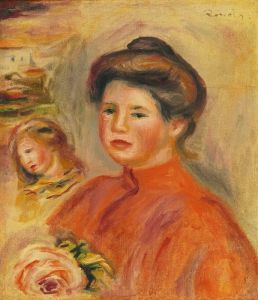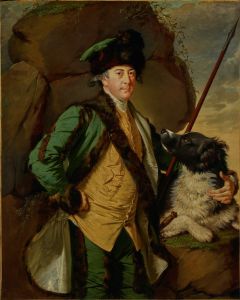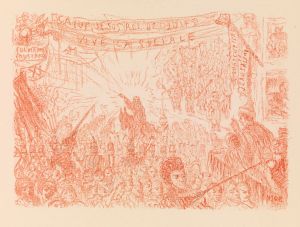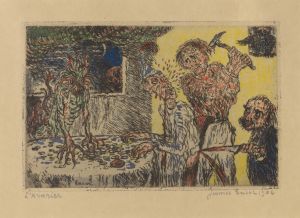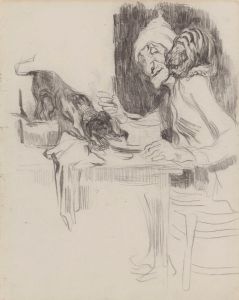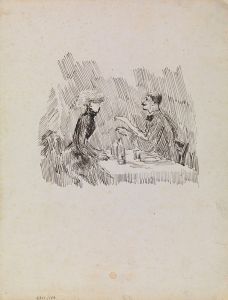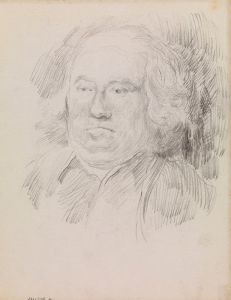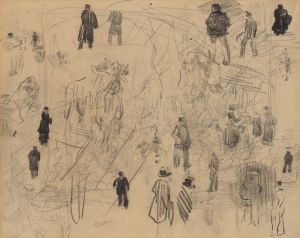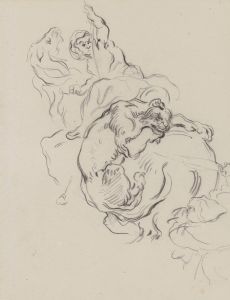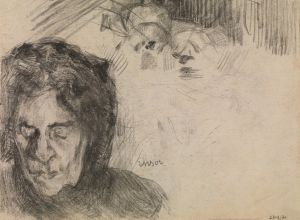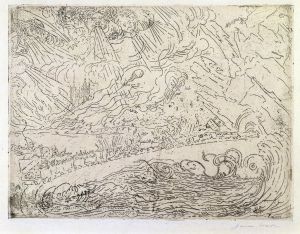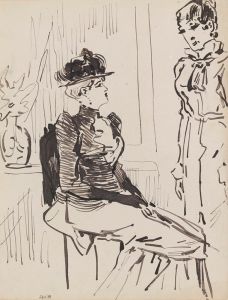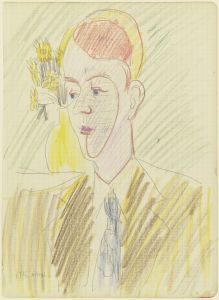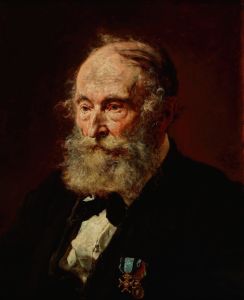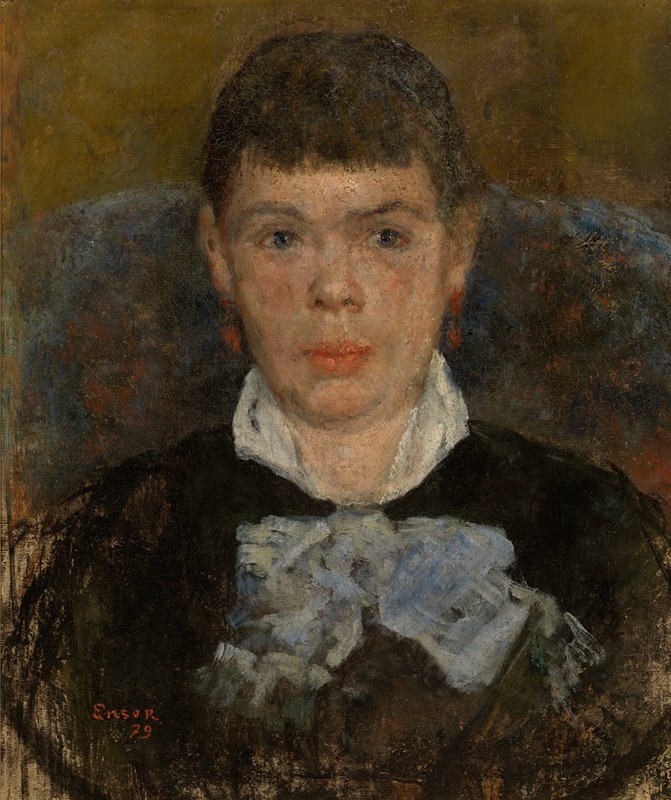
Woman with Upturned Nose
A hand-painted replica of James Ensor’s masterpiece Woman with Upturned Nose, meticulously crafted by professional artists to capture the true essence of the original. Each piece is created with museum-quality canvas and rare mineral pigments, carefully painted by experienced artists with delicate brushstrokes and rich, layered colors to perfectly recreate the texture of the original artwork. Unlike machine-printed reproductions, this hand-painted version brings the painting to life, infused with the artist’s emotions and skill in every stroke. Whether for personal collection or home decoration, it instantly elevates the artistic atmosphere of any space.
"Woman with Upturned Nose" is a painting by the Belgian artist James Ensor, created in 1887. Ensor was a prominent figure in the Symbolist movement and is known for his unique style that often combined elements of satire, fantasy, and the grotesque. His work frequently explored themes of death, masks, and social critique, reflecting the complex cultural and political landscape of late 19th-century Belgium.
The painting "Woman with Upturned Nose" is a striking example of Ensor's distinctive approach to portraiture and his interest in the human face as a site of expression and transformation. The subject of the painting is depicted with exaggerated features, particularly the nose, which is prominently upturned. This stylistic choice is characteristic of Ensor's work, where he often distorted human features to convey psychological depth or social commentary.
Ensor's use of color in "Woman with Upturned Nose" is notable for its boldness and vibrancy. He employed a palette that includes vivid reds, blues, and yellows, which contribute to the painting's dynamic and somewhat unsettling atmosphere. The brushwork is expressive, with visible strokes that add texture and movement to the composition. This technique reflects Ensor's departure from traditional academic painting and his embrace of a more avant-garde, expressive style.
The painting is also significant for its exploration of identity and the human condition. Ensor's choice to depict the woman with an upturned nose can be interpreted as a commentary on vanity, social status, or the superficial nature of societal norms. The exaggerated features may serve to challenge the viewer's perceptions of beauty and character, inviting a deeper reflection on the nature of individuality and self-perception.
"Woman with Upturned Nose" is part of Ensor's broader body of work that often includes fantastical and satirical elements. His paintings frequently feature masks, skeletons, and carnival scenes, which he used to critique the hypocrisies and absurdities of society. This painting, while more subdued in its subject matter, still carries the underlying themes of transformation and the questioning of appearances that are central to Ensor's oeuvre.
James Ensor's influence on modern art is significant, as his work prefigured many of the developments in 20th-century art, including Expressionism and Surrealism. His willingness to experiment with form, color, and subject matter paved the way for future artists to explore new artistic territories. "Woman with Upturned Nose" exemplifies Ensor's innovative spirit and his ability to capture the complexities of human emotion and societal critique within a single image.
Today, Ensor's paintings, including "Woman with Upturned Nose," are celebrated for their originality and their contribution to the evolution of modern art. They are housed in major museums and collections around the world, where they continue to inspire and provoke audiences with their bold vision and enduring relevance.





